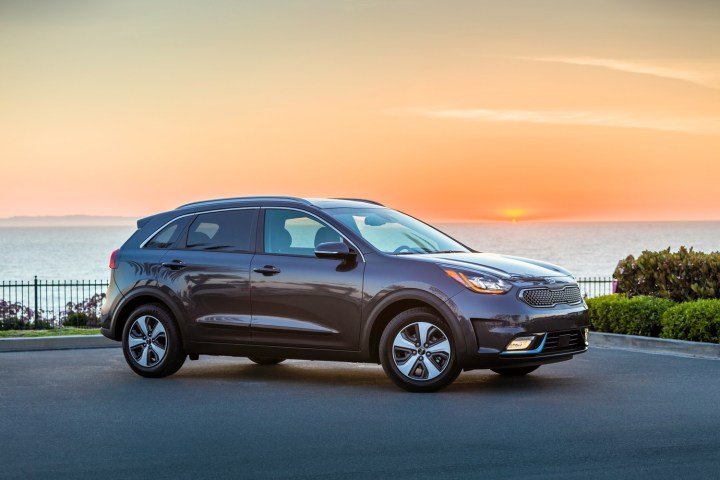
The 2018 Kia Niro Plug-In Hybrid is already on sale in other countries, but the U.S.-spec version makes its debut this week at the 2017 Los Angeles Auto Show. As the name says, the new model marries a plug-in hybrid powertrain with the existing Niro tall-hatchback body (Kia insists on calling the Niro a crossover despite the lack of all-wheel drive). The Niro joins the Optima Plug-In Hybrid as the second vehicle of its kind in Kia’s lineup. Both Kia and parent Hyundai are rapidly expanding offerings of hybrids, plug-in hybrids, and electric cars in order to take on Toyota.
Under the hood sits the same 1.6-liter four-cylinder engine used in the standard Niro. The gasoline engine produces 139 horsepower and 195 pound-feet of torque, and is mated to a six-speed dual-clutch transmission. That combination works with a more powerful electric motor (60 hp instead of 43 hp in the standard Niro) that draws power from a larger lithium-ion battery pack (8.9 kilowatt-hours versus 1.56- kWh).
This allows for long stretches of all-electric driving. Kia claims the Niro Plug-In Hybrid can drive up to 26 miles on electric power alone with an efficiency rating of 105 MPGe. On gasoline, the Niro Plug-In Hybrid achieves an estimated 46 mpg combined (48 mpg city, 44 mpg highway), according to Kia.
To get that level of efficiency, you’ll need to plug in the Niro regularly. Kia says it takes 2.5 hours to fully charge the battery pack from a 240-volt Level 2 AC source, or nine hours using a 120-volt Level 1 AC source. Speedier DC fast charging isn’t available.
Like the standard Niro, the Niro Plug-In Hybrid will be available with a host of driver-assist features, including adaptive cruise control and autonomous emergency braking. It also gets Uvo Eco, a telematics service that lets owners remotely monitor the battery’s state of charge, set charging times to take advantage of off-peak utility rates, preset interior temperature, lock and unlock the doors, and even activate the heated steering wheel using a smartphone or other web-enabled device.
The 2018 Kia Niro Plug-In Hybrid will hit showrooms before the end of this year. Kia hasn’t revealed pricing yet, but expect to pay a premium over the $24,990 base price of a comparable plug-less Niro.


